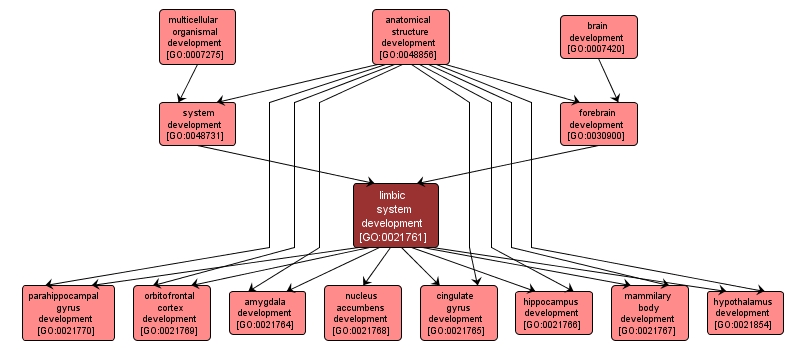GO TERM SUMMARY
|
| Name: |
limbic system development |
| Acc: |
GO:0021761 |
| Aspect: |
Biological Process |
| Desc: |
The progression of the limbic system over time from its initial formation until its mature state. The limbic system is a collection of structures in the brain involved in emotion, motivation and emotional aspects of memory. |
|

|
INTERACTIVE GO GRAPH
|














